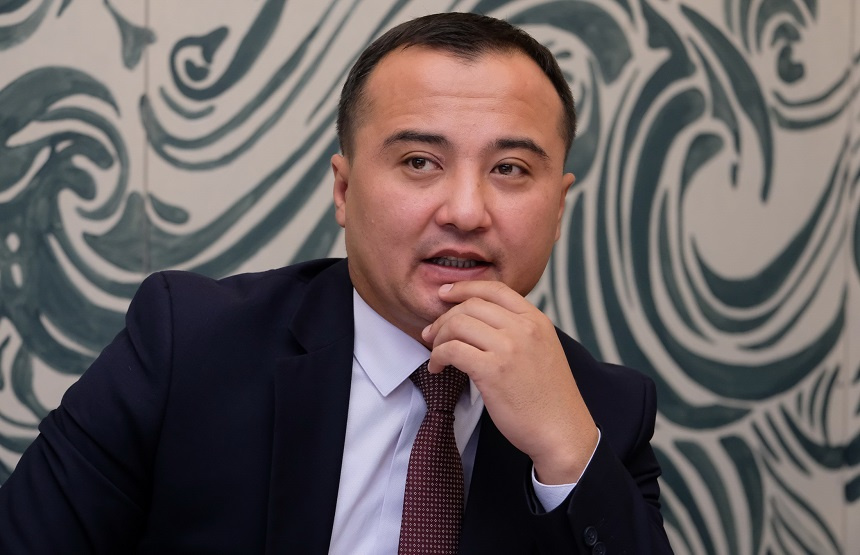
The amendments to the Law "On Microfinance Activities" will help ensure transparency in the microcredit market. However, some of its provisions could lead to the consolidation of microfinance companies. Currently, about 50% of microfinance organizations have a charter capital between 30 and 50 million tenge. The legislative amendments increasing the minimum charter capital to 100 million tenge may force companies that cannot recapitalize to merge or leave the sector. This was stated by the head of the Association of Microfinance Organizations of Kazakhstan (AMFOK), Yerbol Omarkhanov, during a meeting with journalists, as reported by a correspondent of Kapital.kz Business Information Center.
"We believe that raising the minimum charter capital will contribute to the consolidation of microfinance organizations with small assets and will lead to the exit from the business of those participants who cannot meet the new requirements. Accordingly, the number of MFOs in the country may decrease," said Yerbol Omarkhanov.
According to the law, from January 1 to June 1, 2020, the charter capital of MFOs should be at least 30 million tenge, and for pawnshops — 10 million tenge.
From July 1, 2020, to July 1, 2021, the charter capital for MFOs should increase to 50 million tenge, and for pawnshops to 20 million tenge.
By July 1, 2022, MFOs must have a charter capital of 100 million tenge, and pawnshops — 50 million tenge.
"Those MFOs that cannot meet the charter capital requirements may switch to pawnshop activities or the online lending sector," the speaker suggested, adding that it is currently difficult to predict how many companies may close their business entirely.
Overall, the MFO sector positively received the adopted law, because the previously unregulated sector will now fall under the jurisdiction of the National Bank.
From January 1, 2020, they will be obliged to provide information on loans issued to borrowers to the credit bureau, the speaker noted.
"Previously, we used to lend to borrowers who could have come to us from pawnshops or online companies, and we didn’t know their actual debt burden. Now, we have this possibility, and we will be able to assess borrowers' solvency based on their credit history," explained Yerbol Omarkhanov.
Furthermore, thanks to the adopted law, clients of pawnshops, credit partnerships, and online lending companies can now appeal to the regulator for the protection of their rights if violated.
Before the law was passed, they did not have such an opportunity.
Another positive point is that from the new year, the size of the loans that MFOs can issue to their clients can reach up to 20,000 Monthly Calculation Indexes (MCIs), or 50.5 million tenge.
Currently, it can reach only 8,000 MCIs, which is about 20.2 million tenge.
"Now the range of potential borrowers for MFOs will expand, including not only small businesses but also medium and large businesses," noted the head of AMFOK.
The maximum amount of microloans in pawnshops secured by collateral may reach 8,000 MCIs, or 20 million tenge.
In addition, from the new year, there will be universal requirements for all players in the microfinance sector regarding the maximum level of the Annual Effective Interest Rate (AEIR).
Currently, it is 56% for MFOs and 100% for online companies.
Now there will be no such difference — a unified cap is set at 56% per annum.
The law also prohibits microfinance market participants from charging commissions, remuneration, or any other payments related to issuing and servicing loans.
New Opportunities for Companies
The adopted law gives companies the right to create joint-stock companies, which will ensure greater transparency of their activities.
"For foreign investors, this organizational and legal form is more understandable, which is positive for MFOs," reported Yerbol Omarkhanov.
Additionally, from the new year, MFOs will have the right to issue bonds and engage in leasing activities.
The National Bank is currently considering the possibility of signing loan agreements electronically.
This is a positive development for the sector, as it will be more convenient for borrowers in terms of loan accessibility.
Moreover, additional methods for client identification, besides electronic digital signatures (EDS), are being considered — including biometrics, SMS messages, and a unique user identifier and password.
Additional Opportunity
"Another additional opportunity provided by the law is the possibility for MFOs to act as payment agents, i.e., to accept utility payments, fines, and tax payments from the population," noted the speaker.
Limiting Debt Burden
One very important provision is the establishment of the borrower's debt burden ratio at 50% of the total official income.
"We welcome this measure because we believe that it is necessary to limit the over-indebtedness of the population," said Yerbol Omarkhanov.
For recipients of targeted social assistance, it is proposed to calculate the DBR exclusively based on official income data.
However, the specific size of the DBR has not yet been determined.
New AEIR Calculation Formula
From the new year, a new formula for calculating the Annual Effective Interest Rate (AEIR) on microloans will be introduced.
If under the MFO method it was simply a calculation of client income, now under the banking formula, which will apply to microloans as well, all cash flows are discounted, which makes the AEIR higher.
For microloans with a term of up to 45 calendar days and an amount not exceeding fifty times the MCI, the maximum AEIR will be established by a normative legal act of the National Bank, which is currently under development.
Let us remind you that on July 3, 2019, the Law "On Amendments and Additions to Certain Legislative Acts of the Republic of Kazakhstan on Regulation and Development of the Financial Market, Microfinance Activities, and Taxation" was signed.
Its second direction provides for the introduction, starting in 2020, of a differentiated regulatory system for organizations engaged in microfinance activities (MFOs, online lenders, credit partnerships, and pawnshops).
Copyright © 2005 - 2025 Association of Microfinance Organizations of Kazakhstan. All rights reserved.